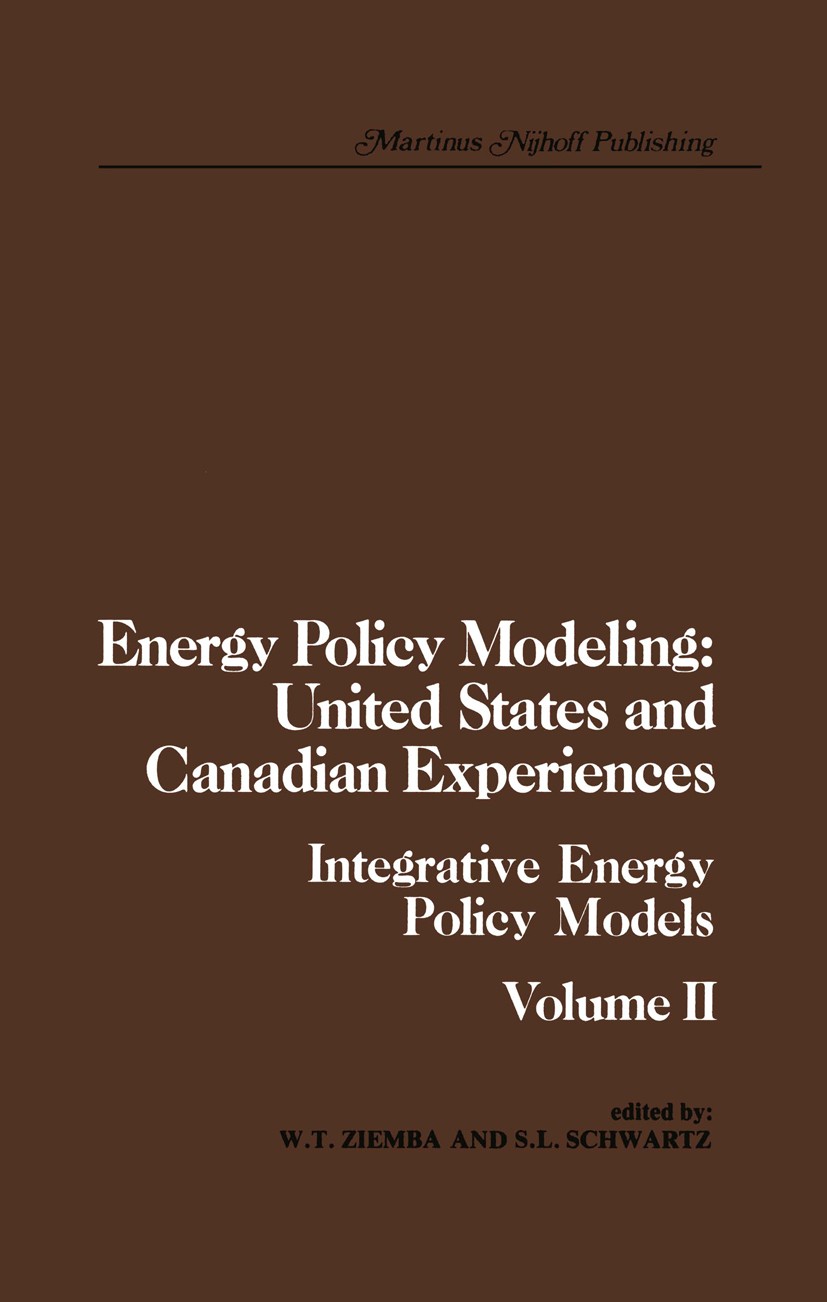| 书目名称 | Energy Policy Modeling: United States and Canadian Experiences | | 副标题 | Volume II Integrativ | | 编辑 | W. T. Ziemba,S. L. Schwartz | | 视频video | http://file.papertrans.cn/311/310365/310365.mp4 | | 图书封面 |  | | 描述 | Alex Cowie As the twentieth century draws to a close, one of our greatest problems is the availability of energy. One way to study the energy problem is to resolve it into four areas: energy demand, energy sources, transportation of energy from sources to demand centers, and the optimal allocation of energy forms to demands. Each of these areas is extremely complex by itself. When efforts are made to tie them together, for example, to produce a National Policy, the complexities are compounded. Another way to study the energy problem, because of its political and social consequences, is to resolve it into geographical areas. Individual provinces of Canada or states of the United States will have their concerns about energy within their geographical boundaries. As producer, consumer, or both, each wants to ensure an energy development program which will work to the maximum benefit of its citizens. Similarly, countries endeavor to protect their citizens and undertake energy policies that will assure either a continuation of the existing quality of life or - particularly in the case of "Third World" countries - a marked improvement in quality of life. These competing and conflicting go | | 出版日期 | Book 1980 | | 关键词 | development; energy; energy policy; petroleum; production | | 版次 | 1 | | doi | https://doi.org/10.1007/978-94-009-8751-7 | | isbn_softcover | 978-94-009-8753-1 | | isbn_ebook | 978-94-009-8751-7 | | copyright | Martinus Nijhoff Publishing, Boston 1980 |
The information of publication is updating

|
|
 |Archiver|手机版|小黑屋|
派博传思国际
( 京公网安备110108008328)
GMT+8, 2025-12-27 01:44
|Archiver|手机版|小黑屋|
派博传思国际
( 京公网安备110108008328)
GMT+8, 2025-12-27 01:44


